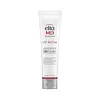What's inside
What's inside
 Key Ingredients
Key Ingredients

 Benefits
Benefits

 Concerns
Concerns

 Ingredients Side-by-side
Ingredients Side-by-side

Water
Skin ConditioningC12-15 Alkyl Benzoate
AntimicrobialMethylene Bis-Benzotriazolyl Tetramethylbutylphenol
UV FilterEthylhexyl Salicylate
UV AbsorberBis-Ethylhexyloxyphenol Methoxyphenyl Triazine
Skin ConditioningDiethylamino Hydroxybenzoyl Hexyl Benzoate
UV FilterEthylhexyl Triazone
UV AbsorberGlycerin
HumectantPropanediol
SolventDiglycerin
HumectantCanola Oil
EmollientMyristyl Myristate
EmollientPotassium Cetyl Phosphate
EmulsifyingVp/Eicosene Copolymer
1,2-Hexanediol
Skin ConditioningDecyl Glucoside
CleansingTocopheryl Acetate
AntioxidantPolyglycerin-3
HumectantXanthan Gum
EmulsifyingCarbomer
Emulsion StabilisingCitric Acid
BufferingPropylene Glycol
HumectantSodium Hydroxide
BufferingPotassium Sorbate
PreservativeWater, C12-15 Alkyl Benzoate, Methylene Bis-Benzotriazolyl Tetramethylbutylphenol, Ethylhexyl Salicylate, Bis-Ethylhexyloxyphenol Methoxyphenyl Triazine, Diethylamino Hydroxybenzoyl Hexyl Benzoate, Ethylhexyl Triazone, Glycerin, Propanediol, Diglycerin, Canola Oil, Myristyl Myristate, Potassium Cetyl Phosphate, Vp/Eicosene Copolymer, 1,2-Hexanediol, Decyl Glucoside, Tocopheryl Acetate, Polyglycerin-3, Xanthan Gum, Carbomer, Citric Acid, Propylene Glycol, Sodium Hydroxide, Potassium Sorbate
Zinc Oxide 19%
Cosmetic ColorantTitanium Dioxide 4%
Cosmetic ColorantWater
Skin ConditioningCaprylic/Capric Triglyceride
MaskingCoco-Caprylate/Caprate
EmollientEthyl Macadamiate
Skin ConditioningGlycerin
HumectantSorbitan Olivate
EmulsifyingPolyglyceryl-6 Polyricinoleate
EmulsifyingC15-19 Alkane
SolventHydrogenated Polyisobutene
EmollientSodium Chloride
MaskingTriethoxycaprylylsilane
Silica
AbrasiveTocopherol
AntioxidantGlyceryl Behenate
EmollientHydroxyacetophenone
AntioxidantPolyhydroxystearic Acid
EmulsifyingPolyglyceryl-2 Isostearate
EmulsifyingDisteardimonium Hectorite
Stabilising1,2-Hexanediol
Skin ConditioningCaprylyl Glycol
EmollientHydrolyzed Jojoba Esters
Skin ConditioningXanthan Gum
EmulsifyingDimethicone
EmollientSclerotium Gum
Emulsion StabilisingLecithin
EmollientPullulan
Trisodium Ethylenediamine Disuccinate
Jojoba Esters
EmollientPolygonum Aviculare Extract
EmollientMalic Acid
BufferingPotassium Sorbate
PreservativeSodium Benzoate
MaskingZinc Oxide 19%, Titanium Dioxide 4%, Water, Caprylic/Capric Triglyceride, Coco-Caprylate/Caprate, Ethyl Macadamiate, Glycerin, Sorbitan Olivate, Polyglyceryl-6 Polyricinoleate, C15-19 Alkane, Hydrogenated Polyisobutene, Sodium Chloride, Triethoxycaprylylsilane, Silica, Tocopherol, Glyceryl Behenate, Hydroxyacetophenone, Polyhydroxystearic Acid, Polyglyceryl-2 Isostearate, Disteardimonium Hectorite, 1,2-Hexanediol, Caprylyl Glycol, Hydrolyzed Jojoba Esters, Xanthan Gum, Dimethicone, Sclerotium Gum, Lecithin, Pullulan, Trisodium Ethylenediamine Disuccinate, Jojoba Esters, Polygonum Aviculare Extract, Malic Acid, Potassium Sorbate, Sodium Benzoate
 Reviews
Reviews

Ingredients Explained
These ingredients are found in both products.
Ingredients higher up in an ingredient list are typically present in a larger amount.
1,2-Hexanediol is a synthetic liquid and another multi-functional powerhouse.
It is a:
- Humectant, drawing moisture into the skin
- Emollient, helping to soften skin
- Solvent, dispersing and stabilizing formulas
- Preservative booster, enhancing the antimicrobial activity of other preservatives
Glycerin is already naturally found in your skin. It helps moisturize and protect your skin.
A study from 2016 found glycerin to be more effective as a humectant than AHAs and hyaluronic acid.
As a humectant, it helps the skin stay hydrated by pulling moisture to your skin. The low molecular weight of glycerin allows it to pull moisture into the deeper layers of your skin.
Hydrated skin improves your skin barrier; Your skin barrier helps protect against irritants and bacteria.
Glycerin has also been found to have antimicrobial and antiviral properties. Due to these properties, glycerin is often used in wound and burn treatments.
In cosmetics, glycerin is usually derived from plants such as soybean or palm. However, it can also be sourced from animals, such as tallow or animal fat.
This ingredient is organic, colorless, odorless, and non-toxic.
Glycerin is the name for this ingredient in American English. British English uses Glycerol/Glycerine.
Learn more about GlycerinPotassium Sorbate is a preservative used to prevent yeast and mold in products. It is commonly found in both cosmetic and food products.
This ingredient comes from potassium salt derived from sorbic acid. Sorbic acid is a natural antibiotic and effective against fungus.
Both potassium sorbate and sorbic acid can be found in baked goods, cheeses, dried meats, dried fruit, ice cream, pickles, wine, yogurt, and more.
You'll often find this ingredient used with other preservatives.
Learn more about Potassium SorbateWater. It's the most common cosmetic ingredient of all. You'll usually see it at the top of ingredient lists, meaning that it makes up the largest part of the product.
So why is it so popular? Water most often acts as a solvent - this means that it helps dissolve other ingredients into the formulation.
You'll also recognize water as that liquid we all need to stay alive. If you see this, drink a glass of water. Stay hydrated!
Learn more about WaterXanthan gum is used as a stabilizer and thickener within cosmetic products. It helps give products a sticky, thick feeling - preventing them from being too runny.
On the technical side of things, xanthan gum is a polysaccharide - a combination consisting of multiple sugar molecules bonded together.
Xanthan gum is a pretty common and great ingredient. It is a natural, non-toxic, non-irritating ingredient that is also commonly used in food products.
Learn more about Xanthan Gum